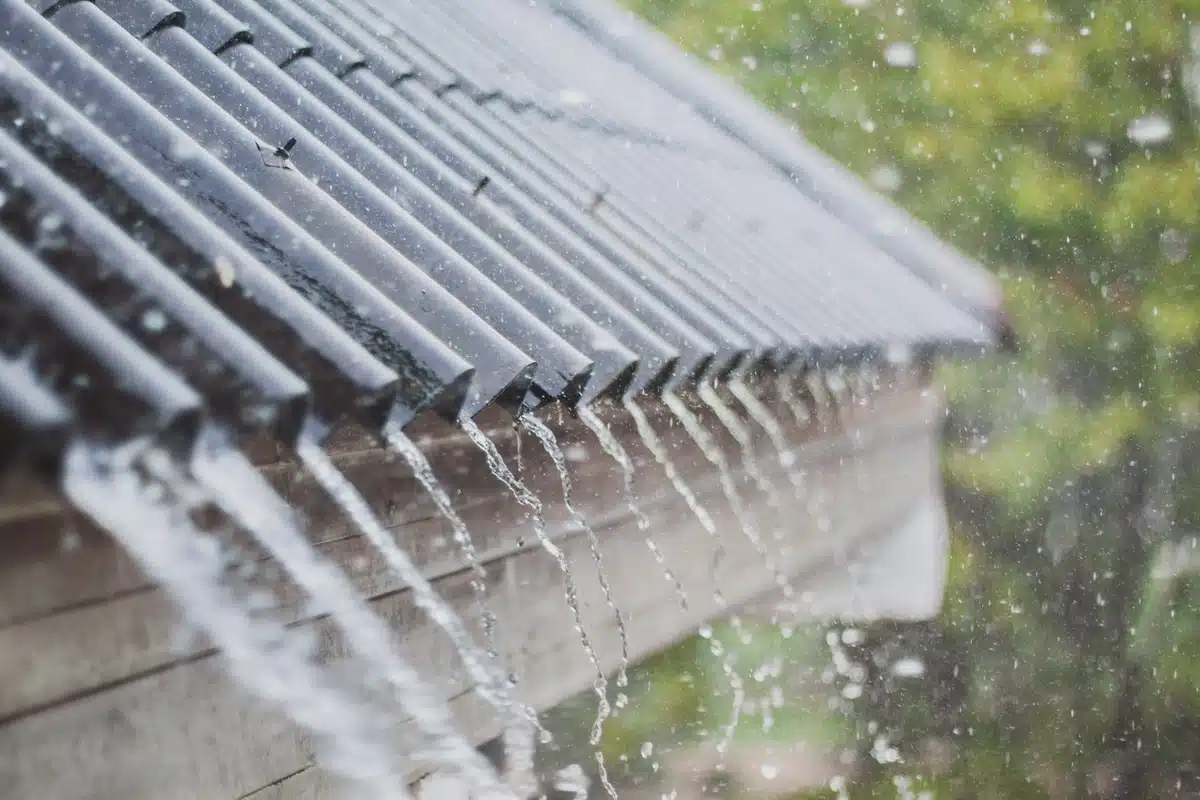Table of Contents
How To Find A Roof Leak 7 Best Tips
If you’re experiencing water damage in your home, the first step is to find the source of the leak. Roof leaks can be difficult to track down, but with a little detective work and these 7 best tips, you can locate the problem and get your roof repaired.
If a leak goes unchecked, your home might face:
- Mold growth
- Stinky, mildewy attic
- Rotted wood beams and drywall
- Increased energy and heating bills
Luckily, this guide will walk you through how to find a roof leak 7 best tips step by step. We’ll also provide some tips on how to prevent future leaks.
What Causes Roof Leaks?
A roof leak can cause serious damage to your home if it’s not fixed quickly. Water can seep into walls, ceilings, and insulation, causing mold and rot. In extreme cases, a leaking roof can even collapse. That’s why it’s important to take care of the problem as soon as you notice it.
Roof leaks might be caused by a number of factors, such as:
Storm Damage
If your home experiences a severe storm, high winds can cause shingles to blow off your roof. Once the protective barrier is gone, water can seep into your home and cause leaks. Storm damage can occur from large debris hitting your roof, strong winds lifting up or off your shingles, or hail large enough to impact and even penetrate your roofing shingles. Knowing how to find a roof leak 7 best tips is crucial to address these issues quickly.
Poor Installation
If your roof is not installed correctly, it’s more likely to experience leaks. Make sure you hire a qualified and experienced contractor to avoid this issue. Proper installation is one of the top strategies from how to find a roof leak 7 best tips that can prevent leaks from happening in the first place.
Defective Materials
If the materials used to construct your roof are defective, it’s more likely to experience leaks. This is why it’s important to use high-quality materials that come from reputable manufacturers. When following how to find a roof leak 7 best tips, always prioritize materials with excellent warranties.
Failed Repairs
DIY repairs often result in failed attempts that only worsen the damage. A core takeaway from how to find a roof leak 7 best tips is to avoid DIY fixes unless you have roofing experience.
Insect or Rodent Infestation
Pests like squirrels or mice can create small openings in your roof, leading to leaks. Regular inspections, as emphasized in how to find a roof leak 7 best tips, can help you spot these issues early.
Age of Your Roof
As your roof ages, it becomes more brittle and prone to leaks. Proper maintenance, one of the key suggestions in how to find a roof leak 7 best tips, can extend its life and prevent damage.
How To Find A Roof Leak 7 Best Tips
Now that you know what might cause a leak, let’s dive into how to find a roof leak 7 best tips. Here’s what to look for:
- Water Stains on the Ceiling or Attic Floor
Water stains, often brown or yellow, are a common sign of a roof leak. One of the 7 best tips is to inspect the attic for active leaks and address them immediately. - Mold Growth in the Attic
Mold can result from trapped moisture caused by a roof leak. A critical part of how to find a roof leak 7 best tips is recognizing signs of mold early. - Sagging Ceiling
If your ceiling is sagging, it’s likely due to a large leak. One of the 7 best tips is to temporarily mitigate this issue with a bucket or tarp before scheduling repairs. - Rotten Wood Beams
Rotten beams can compromise your home’s structure. A step in how to find a roof leak 7 best tips is identifying these weak points to prevent further damage. - Damp Insulation
Soaked insulation indicates water penetration from the roof. As outlined in 7 best tips, inspect your insulation regularly to catch this sign. - Higher-Than-Normal Utility Bills
A sudden spike in utility bills might point to a hidden roof leak. Monitoring energy usage is one of the 7 best tips for detecting leaks indirectly. - Signs of Rodents or Insects
If you notice critters in your attic, it could indicate an entry point caused by a roof leak. Following how to find a roof leak 7 best tips will help you seal these access points.
Get the Job Done Right: Work With a Roofing Expert
Now that you’ve learned how to find a roof leak 7 best tips, it’s essential to work with an experienced roofer to fix the problem properly. Attempting to repair the leak yourself might worsen the damage or lead to additional costs.
The professional team at Tectum Roofing can take care of your roofing problems quickly and efficiently. To get started, contact us for a FREE inspection today.

A roof leak can cause serious damage to your home if it’s not fixed quickly. Water can seep into walls, ceilings, and insulation, causing mold and rot. In extreme cases, a leaking roof can even collapse. That’s why it’s important to take care of the problem as soon as you notice it.
Roof leaks might be caused by a number of factors, such as:
Storm Damage
If your home experiences a severe storm, high winds can cause shingles to blow off your roof.
Once the protective barrier is gone, water can seep into your home and cause leaks. Storm damage can occur from large debris hitting your roof, strong winds lifting up or off your shingles, or hail large enough to impact and even penetrate your roofing shingles.
This is when it’s important to know how to find a roof leak so that you can patch or tarp the area until it’s time to get the proper repairs.
Poor Installation
If your roof is not installed correctly, it’s more likely to experience leaks.
Make sure you hire a qualified and experienced contractor to avoid this issue. If shingles are installed crooked or without the proper training, they can be immediately susceptible to leaks.

One good way to avoid paying for issues due to poor installation is to ensure the roofing contractor you hire has a good workmanship warranty of at least 10 years. A workmanship or labor warranty will cover any issues related to the actual installation of your roof from the team of roofers.
It’s always important to check out your roof warranty options so that you can ensure the best and longest-lasting results.
Defective Materials
If the materials used to construct your roof are defective, it’s more likely to experience leaks. This is why it’s important to use high-quality materials that come from reputable manufacturers. If you’re unsure about which materials to use, ask your contractor for recommendations.
Similar to workmanship issues, defective materials will be covered under a manufacturer warranty. Ideally, you should find a contractor who installs brands that offer lifetime warranties on their products.
Failed Repairs
Have you ever seen pictures of DIY fails? While hilarious to laugh at the demise of an inexperienced homeowner, it’s actually quite a costly venture to attempt to repair your own roof. Without the expertise of a professional roofer, failed DIY repairs only opens your roof up to bigger and more expensive damage.
Insect or Rodent Infestation

Attics can provide a nice comfy home for squirrels, mice, bats, and other pests. They can not only wreak havoc on your home’s electrical wiring and wood structure but chew away holes and entrance points on your roof.
Age of Your Roof
Even the best quality roofs will eventually succumb to leaks. The average lifespan of a shingle roof is 15-25 years, but that doesn’t mean it can’t last longer with proper maintenance. As your roof ages, it becomes more brittle and susceptible to damage from severe weather conditions.
Now that you know what might cause a leak— how do you know what to look for?
How to Find a Roof Leak (7 Steps)
There are a few telltale signs that you have a leak. If you notice any of the following, it’s time to call a roofer:
1) Water Stains on the Ceiling or Attic Floor
If you have water stains on your ceiling, it’s a good indication that you have a leak in your roof. Water stains are usually brown or yellow and look like wet spots. If the stain is active (meaning the spot is still wet), there will be water dripping from the ceiling. To confirm that the stain is indeed from a roof leak, you will need to take a more thorough look.
While plumbing pipes often run through your basement, it’s not uncommon for a water pipe to also be in the attic and to spring a leak. Water stains on the ceiling can also be a sign of trapped or excessive moisture in the attic. This can be caused by poor ventilation or installation in the attic, which can be addressed as a separate issue.

2) Mold Growth in the Attic
Similar to the water stains, mold in the attic can also be caused by trapped moisture if it isn’t caused by a roof leak. This can be caused by a number of things, including a roof leak, poor ventilation, or improper insulation. Not only is mold unsightly and smelly, but it can also be dangerous to your health. If you suspect you have mold, you should first avoid going into the attic, and then call a professional roofer right away.
3) Sagging Ceiling
Large leaks can produce enough water to actually sag your ceiling and sit as a pool of water. If you can catch these leaks early, a bucket or tarp can help mitigate this problem from getting worse, but ultimately it will require replacement of drywall and potentially wood beams. www.theexecutiveroofcoach.com
4) Rotten Wood Beams
The wood beams supporting your attic/roof can rot over time if they are not properly sealed and protected from the elements. If you notice any rotten wood, call a professional to take a look as this could be indicative of a larger problem and a consistent roof leak that has caused the wood to rot.
5) Damp Insulation

Obviously, if water is dripping from your roof, it might first hit the insulation which will just soak up the water and flatten— particularly if you have foam or sheet insulation. This not only opens up your roof and attic to mold, but completely ruins the integrity of your insulation and its job to keep your home cool (or warm).
6) Higher-Than-Normal Utility Bills
If you’ve noticed a spike in your water or energy bills, it might be due to a roof leak. Water can seep through cracks and crevices and cause damage to the structure of your home, as well as affect how well your HVAC system runs. If you think your roof leak might be to blame for increased utility bills, get it inspected right away.
7) Signs of Rodents or Insects
Last but not least, if you notice any signs of rodents or insects in your attic or home, it’s a good indication that you have a roof leak. This is simply based on the fact that somewhere in your attic, there’s a hole where these creatures are making their way inside.
These critters are looking for food and shelter, and a leaky roof is a perfect opportunity for them to get inside. Not only are they unsightly, but highly damaging to your home.
Get the Job Done Right: Work With a Roofing Expert
Now that you know how to find a roof leak, it’s important that you get the job done right and work with an experienced roofer. If you try to fix the problem yourself, you could end up making things worse or even causing further damage to your home.
The professional team at Tectum Roofing can take care of your roofing problem quickly and efficiently. To get started, contact us for a FREE inspection.



